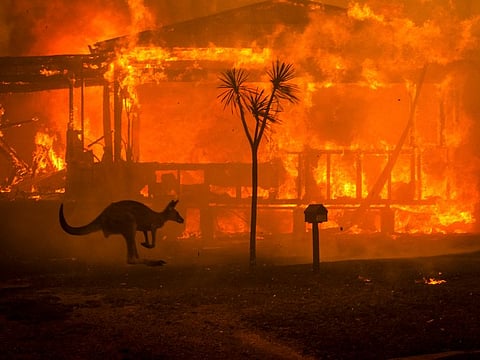Australia declares El Nino as spring heatwave sparks bushfire concerns
Authorities warned high winds could whip up bushfires

Sydney: Australia on Tuesday declared an El Nino weather pattern was underway as the country's southeast sweltered in an intense spring heat wave that raised the risks of bushfires and prompted authorities to issue a total fire ban for Sydney.
Australia had held off declaring an El Nino but has been bracing for a warm and dry southern hemisphere spring and summer in 2023, after three years of heavy rains and frequent flooding.
The anticipated dry weather could hit wheat production in Australia, one of the world's top exporters, with winter wheat harvesting set to start in November.
"We are already seeing extreme conditions in some parts of the continent, particularly in the duration of heat. We've had an extended period of warm and dry weather to start spring," the Bureau of Meteorology (BoM) forecaster Karl Braganza told reporters.
Australia's last two fire seasons have been quiet compared to the 2019-2020 "Black Summer" bushfires that destroyed an area the size of Turkey and killed 33 people.
The US National Oceanic and Atmospheric Administration's Climate Prediction Center (NOAA) declared an El Nino event in June. The BoM uses different, slightly stricter metrics for declaring El Nino.
The BOM's declaration of an El Nino, typically associated with extreme weather events from wildfires to cyclones and droughts, comes in the middle of a five-day burst of uncommon spring heat in parts of the country. The heatwave is forecast to last until Wednesday, pushing temperatures well above the September average.
Several regions have been given high fire danger ratings as authorities warned high winds could whip up bushfires and urged residents to minimise fire risks at their houses.
More than 500 firefighters and emergency personnel are trying to tame 61 fires across New South Wales state as of Tuesday morning, with 13 not yet contained, authorities said.
Twenty-one schools in New South Wales, mostly in the state's south, have been closed. Fire danger ratings in the south coast have been raised to 'catastrophic' due to stronger-than-expected winds.
"Its the biggest risk we've faced since the 2019-20 fire season," New South Wales Rural Fire Service Commissioner Rob Rogers told Sky News.
Sydney is set to post five consecutive daytime maximum temperatures of more than 30 degrees Celsius (86 F) in September, a record, according to the Bureau of Meteorology.
Temperatures could reach 34 degrees Celsius (93.2 F) in Sydney on Tuesday, just shy of the September record of 34.6 degrees Celsius (94.28 F) in 1965. But a cold front from Thursday will bring some relief to the heat, pushing temperatures down to the low 20s.
Sign up for the Daily Briefing
Get the latest news and updates straight to your inbox



